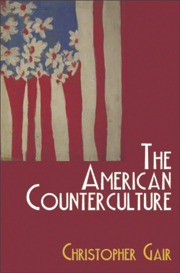1 - Fiction
from Part One - 1945–1960
Published online by Cambridge University Press: 05 August 2013
Summary
The Beat Generation, that was a vision that we had, John Clellon Holmes and I, and Allen Ginsberg in an even wilder way, in the late Forties, of a generation of crazy, illuminated hipsters suddenly rising and roaming America, serious, curious, bumming and hitchhiking everywhere, ragged, beatific, beautiful in an ugly graceful new way – a vision gleaned from the way we had heard the word ‘beat’ spoken on streetcorners in Times Square and in the Village, in other cities in the downtown city night of postwar America – beat, meaning down and out but full of intense conviction … It never meant juvenile delinquents, it meant characters of a special spirituality who didn't gang up but were solitary Bartlebies staring out the dead wall window of our civilization.
Jack Kerouac, ‘About the Beat Generation’ (1957)What I do know is that choosing to be an artist: writer, dancer, painter, musician, actor, photographer, sculptor, you name it, choosing to be any of these things in the world I grew up in, the world of the 40s and early 50s, was choosing as completely as possible for those times the life of the renunciant. Life of the wandering sadhu, itinerant saint, outside the confines and laws of that particular and peculiar culture.
Diane di Prima, Recollections of My Life as a Woman (2001)- Type
- Chapter
- Information
- The American Counterculture , pp. 37 - 55Publisher: Edinburgh University PressPrint publication year: 2007

